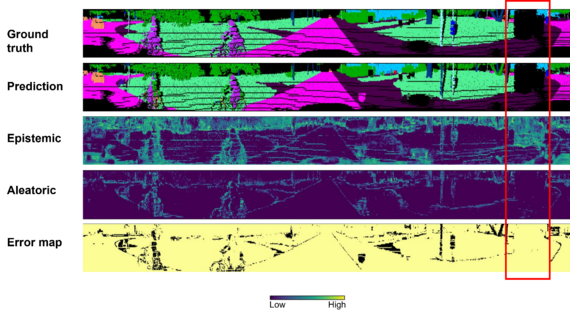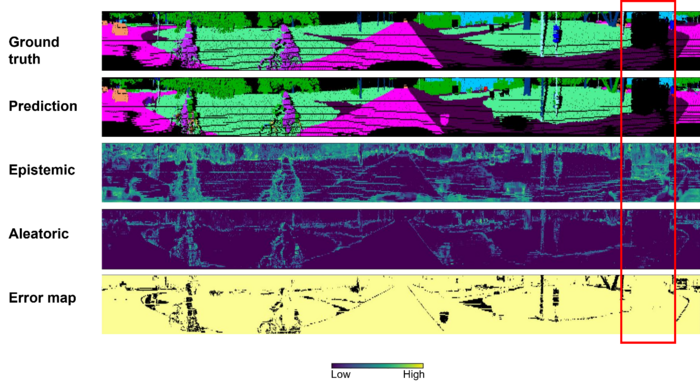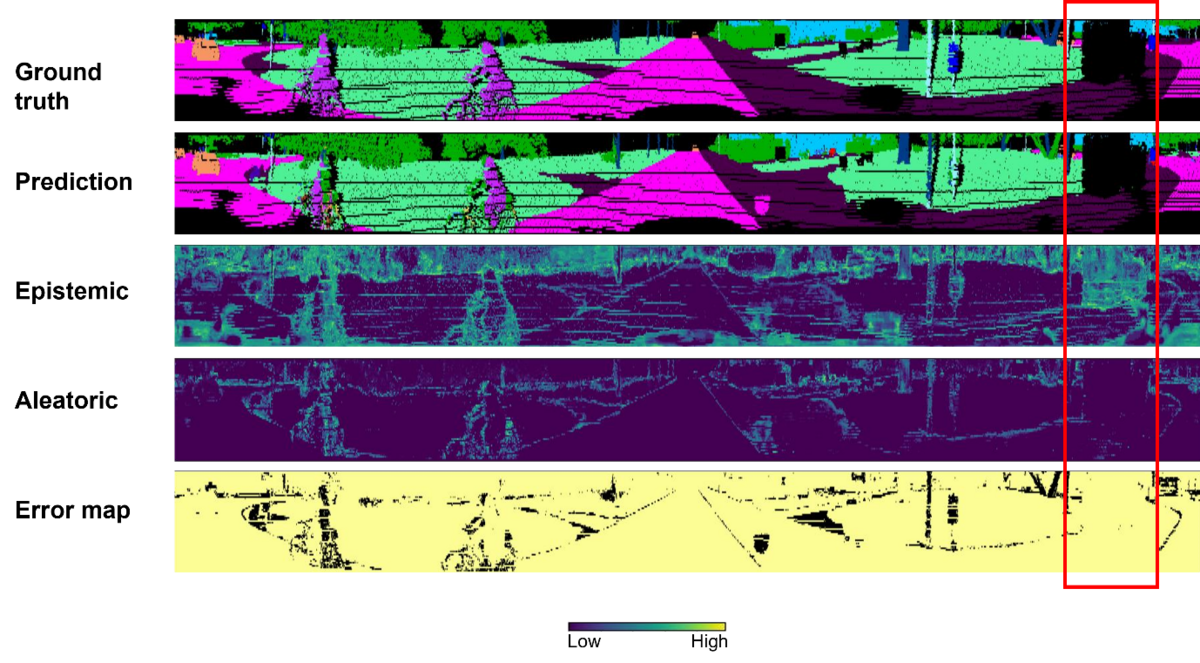GeoWerkstatt-Projekt des Monats Dezember 2024
Projekt: Uncertainty Estimation for LiDAR Scene Semantic Segmentation
Forschende: Hanieh Shojaei
Projektidee: Reliable deep learning models require not only accurate environmental perception but also effective methods to quantify uncertainty, ensuring reliability and preventing over-reliance on potentially erroneous predictions. In this study, we utilize a deep learning model to classify LiDAR point clouds, projected into 2D images, and quantify the classification uncertainty using the distribution of the features in the model's feature space.
Uncertainty estimation is particularly crucial in safety-critical applications like autonomous driving, which depend on precise semantic segmentation of LiDAR point clouds for real-time 3D scene understanding. When using deep learning for classification, two primary types of uncertainty are identified: aleatoric uncertainty, arising from irreducible noise inherent in the data, and epistemic uncertainty, stemming from uncertainties in the model's parameters that can be mitigated with additional data.
Our study is structured into two main sections. Initially, for semantic segmentation, we transform 3D LiDAR data into 2D spherical range-view images. These images are processed by the U-Net shaped model, SalsaNext [1], which classifies each pixel into 20 distinct classes.
In the second part, our uncertainty estimation methodology assumes that the features of each class within the model's feature space adhere to a multivariate normal distribution. This assumption allows us to fit a Gaussian Mixture Model (GMM) to the high-dimensional feature space, with one component per class, effectively capturing the distribution of training data features. From this GMM, we compute the responsibility value for each class component, indicating the probability that a test sample belongs to a particular class, serving as the classification score.
Each component of the GMM is defined by the empirical mean and covariance matrix derived from samples of each class in the feature space. These parameters are presumed to follow Gaussian and Inverse-Wishart distributions, respectively [2]. This enables us to extend our methodology to model these distributions, allowing us to sample multiple GMM configurations. This approach provides a spectrum of responsibility value estimations for a test sample, rather than a single value from one fixed GMM configuration. We define epistemic uncertainty as the disagreement among the responsibility values across sampled GMMs, quantified by measuring the entropy of classification outcomes across these models. Concurrently, aleatoric uncertainty is assessed by calculating the entropy of the responsibility values derived from the empirical data using the GMM. This dual approach facilitates a comprehensive evaluation of both inherent and model-related uncertainties in the classification process.
Our experiments reveal that the highest epistemic uncertainty in a semantic segmentation map of LiDAR data occurs with objects that were not encountered during training. For instance, as shown in Figure 1 in the red box, the unlabeled objects colored black on the ground highlight areas of significant epistemic uncertainty. Conversely, aleatoric uncertainty is primarily observed at the boundaries between classes, such as where the street meets the sidewalk.
References
[1] T. Cortinhal, G. Tzelepis, and E. Erdal Aksoy, "SalsaNext: Fast, Uncertainty-Aware Semantic Segmentation of LiDAR Point Clouds," in Lecture Notes in Computer Science, Advances in Visual Computing, G. Bebis et al., Eds., Cham: Springer International Publishing, 2020, pp. 207–222.
[2] C. M. BISHOP, Pattern recognition and machine learning. New York: Springer, 2006.


 ©
ikg
©
ikg


